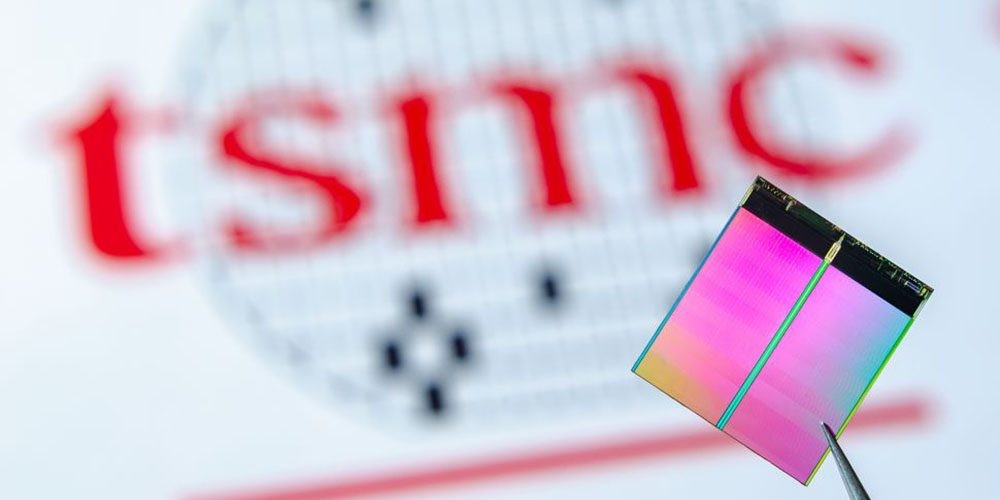TSMC is well poised to remain a strong incumbent in domestic and many international markets, but perhaps its most valued proposition to investors is also its large untapped markets to be captured, in quickly emerging economies such as India and many parts of South East Asia.
____________________Taiwan Semiconductor Manufacturing Company
Data is accurate as of publishing date
-
TickerPrice52 Week RangeMarket Cap
-
TSMC$58$36.24 - $60.64$302.04B
Note: This is meant to be a contemplative discussion piece on the stock of TSMC, not a prediction piece. In times as volatile as these, it is crucial to consider different sources and different views.
TSMC is currently the world’s largest semiconductor foundry, manufacturing logic chips for some of the personal computing and mobile industry’s largest customers including AMD, Nvidia and Apple. Although stock prices and earnings in the semiconductor industry have slumped in 2019, TSMC continues to have earnings growth in all four quarters, with stock valuations during these periods of downturn still demonstrating a sustainable or rising trend. TSMC continues to show strong financials with debt to asset ratios at 0.283, and healthy P/E ratio of 26.17, and an EBITDA margin of 67.2% as of 4Q2019, while some of its largest competitors such as Intel has an EBITDA margin of 45.71% and Samsung at 36.21%, with more stable earnings, cash flows and profitability for TSMC. Much of the stock’s value rests in this cyclical nature of the industry, and the company’s ability to differentiate and attract and retain large customers to ensure profitability from scale. Currently, as the largest of only three chip manufacturers capable of producing 7nm chipsets to meet the demand of leading tech firms such as Apple and Qualcomm (other direct competitors such as GlobalFoundries have stopped all 7nm development), and as the semiconductor industry looks to recover with substantial growth through emerging technologies in 2020, this indicates high future returns and good growth value for TSMC.
While its largest direct competitors Intel and Samsung are integrated device manufacturers (IDM) that both design and produce chips, in this mature and highly specialized manufacturing process, most other large chipmakers remain fabless, including AMD, Nvidia, and Qualcomm, all of which are major customers of TSMC. The extremely high start-up cost of capital for vertical integration for many is simply still not a viable option, as Moore’s Law (or more recently Rock’s Law) and extremely difficult and poor yields of stable semiconductor cores would require very high economies of scale to sustain the turnover rates of chip designs demanded by the markets and peak production efficiency to remain profitable. These customers are likely to remain as TSMC’s customers for the long run, as AMD, for example, continues to remain as Sony’s and Microsoft’s main gaming console chip supplier, both of whom are expected to launch the new devices in 2020, namely the PS5 and Xbox Series X respectively. In more recent news, Apple has also just requested increased production of its A13 chips from TSMC to keep up with high demands for iPhone 11 and iPhone 11 Pro, and is reportedly transitioning its MacBook line to ARM processors as in iPhones from TSMC in 2020-2021, which represent a huge leap in portable computer technology that will likely capture even more of the market share, and thus for TSMC semiconductor market share from Intel, as Intel has yet to adopt the ARM architecture. Currently, Intel’s roadmap shows that it is only planning to have 7nm chips beginning in 2021, and having already delayed its chips by two years due to issues of yield and profitability, continue to fall behind in the CPU market as AMD and TSMC continue their momentum and chip away at its market share. Qualcomm, in a similar vein, is expected to maintain high growth in the Android phone market, with stable iterations of emerging technologies such as foldable phones that are expected to draw high demand and boost smartphone upgrade cycles. TSMC will continue to largely benefit from much of AMD, Apple, and Qualcomm’s momentum throughout 2020, but its diversified client base including other large players such as Nvidia with graphics chips as well as players such as Broadcom that build critical network and data servers ensures stability of cash flows and revenue. While the semiconductor market slumped in 2019, many analysts have begun predicting a spur in growth from 4Q2019 as many new emerging technologies begin widespread rollout on a large scale, including 5G networks, Internet of Things, extended reality including AR and VR, and much more integrated uses of AI. 5G networks in particular, are expected to be the largest boost for the semiconductor industry, as it begins to roll out on a large scale worldwide, and demand for 5G capable smartphones increase, prompting the end of market downturn with the technological advancements as analysts predict an industry rebound of 4-6% in 2020.
TSMC is well poised to remain a strong incumbent in domestic and many international markets, but perhaps its most valued proposition to investors is also its large untapped markets to be captured, in quickly emerging economies such as India and many parts of South East Asia, that is expected to see large increases in frequency of smartphone upgrade cycles as domestic incomes increase, representing a huge market for TSMC’s high-end 7nm chips to tap into. While some cite concerns over trade wars between the US and China, experts have long predicted that semiconductors are far too depended on by both markets for protectionism to have much effect on the industry, and that any issues are likely limited to the short term, and will not affect long term valuations of the company. Announcements of a significantly higher Capex budget of $20 billion in 2020 has also boosted the long term outlook of the company, and represent stable long term earnings to come.



